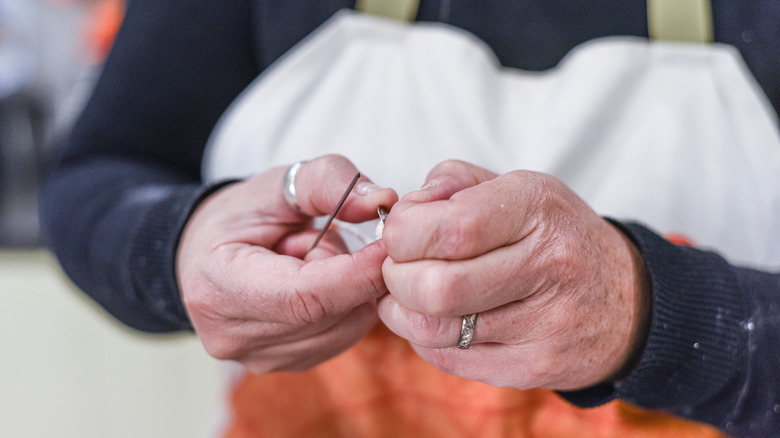How To Keep Your Favorite Candles Burning Evenly
As a candle lover, you know what you like. And the National Candle Association (NCA) makes it their business to keep track of your preferences. For example, the NCA knows that consumers prefer scented candles housed in jars, and they purchase more single-wick candles than multiple-wick candles, it tells Gifts & Decorative Accessories. Votives and tealights round out the top three choices among consumers' favorite candles. Colored candles are far and away preferred over white candles, though consumers care about how a candle smells, too. They also home in on it if they believe it will create a soothing atmosphere in their home.
All this may conform with your world — until you learn that your fellow candle lovers keep their passion on what you might call a low flame. They may buy more candles during the winter months, but they also tend to buy candles regularly throughout the year. And they hardly break the bank doing so, with nearly 80% of consumers spending less than $200 a year on candle purchases.
If you, too, favor container-based candles, you'll be following a trend in which they are expecting to dominate the candle market through 2032, Future Market Insights says. Ensuring that these candles burn evenly can be a challenge, but you can do it. And there are more tactics available to you than you may realize.
Trim the wick
It's doubtful that anybody really likes doing it, but trimming the wick is the most important step you can take to encourage an even burn. Trimming the wick to between 1/8- and ¼-inch long will also reduce dripping and flaring, which can play their own role in producing a candle that looks like a jagged mountain slope, Apartment Therapy says. But trimming should be more than just a one-time exercise; wicks should be cut down to size each and every time before a candle is set alight, Purcell & Woodcock says. Trimming the wick pays other dividends, too. It reduces the candle's natural tendency to smoke and create soot marks.
You can use a pair of regular scissors to cut candle wicks; even a pair of nail clippers will do. But if you're fighting the suggestion in the first place, you may want to try a little reverse psychology. In other words, purchase a dedicated wick trimmer and keep it somewhat hidden but always nearby. In this way, you'll be using the trimmer much like a candle snuffer: as a visible reminder to follow best practices while using a fun candle accessory at the same time.
Make other pre-emptive moves
A candle snuffer is another tool you may wish to think of as "saving you from yourself." You simply cap the candle with the snuffer to extinguish the flame, so you don't have to blow on it. The risks are multi-dimensional: the flame could catch on nearby fabric (like a curtain) and start a fire or fill the area with smoke once the wick stops smoldering, Better Homes & Gardens says. By blowing out the flame, you also may unwittingly bury the wick, defying the candle to burn evenly next time.
Two other pre-emptive moves will help your candle burn evenly, too. Place it on a flat, even surface so that the wax burns evenly, and position the candle away from drafts. Drafts can descend on a candle from gusts of air coming from windows and doors. But they can just as easily come from air vents. Depending on the intensity of the draft, it could cause the candle to flicker, causing the wax to melt faster on one side.
A two- or three-wick candle burns more evenly than a single-wick candle (though the type is not consumers' current preference). This is because the additional wick or wicks encourage the candle to melt faster, Purcell & Woodcock says. Multiple-wick candles also tend to form fewer "tunnels" or shallow dips. And with more wicks, these candles create more light, which means there's more to like and, as the NCA knows, more to love.


